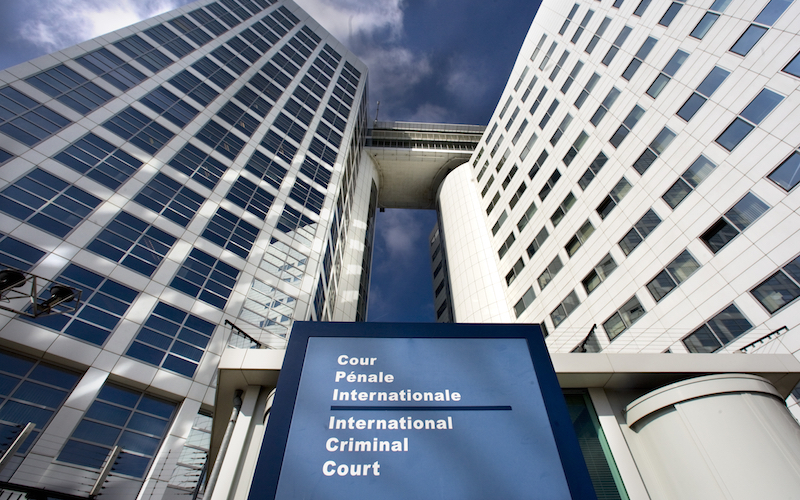
The Courts and Tribunals of the Hague
Summary: 1. Introduction – 2. The Permanent Court of Arbitration – 3. The International Court of Justice – 4. The International Criminal Court
1. Introduction
When we talk about Courts and Tribunals of The Hague, of course this is a big and important topic. In many we are very interested in this information about the most important institutions in the world, namely the Permanent Court of Arbitration PCA, the International Court of Justice ICJ, the International Criminal Court ICC. These are the Courts and Tribunals located in The Hague that are rich of history and also different from each other.
2. The Permanent Court of Arbitration
Starting with the Permanent Court of Arbitration, which implements the dispute resolution method of international arbitration, it is important that the historical traces are already from 1794 with the agreements ”Jay Treaty” between the United States and United Kingdom. Then also in 1872 the Alabama Claims arbitration report an even more decisive phase in the development of International arbitration. The third phase of 1899 marks the foundation of the Permanent Court of Arbitration by a specific agreement with its own body of lawyers belonging to the States signatories to the Convention, a permanent Bureau with registry and secretariat functions and a set of rules of Procedure to govern the conduct of arbitrations. Later in 1902 the Court began to be operative. The draft of the Permanent Court of Arbitration Convention will become in the following years source of fundamental ideas and source of inspiration for the drafting of the Statute of the Permanent Court of International Justice. The Permanent Court of Arbitration that has its seat from 1913 in the Peace Palace have a historical path so well consolidated for centuries and its experience is a true demonstration of the great contribution in the development of the International Law. They are the many cases faced in all these years and others still pending in our days. Pending cases exercise a wide variety of arguments between various combinations of States, States entities, International organizations and private parties.
3. The International Court of Justice
The International Court of Justice {ICJ}, also knowing as “The World Court”, is the principal judicial organ of the United Nations. In turn, the foundations of the ICJ are consolidated in the history. The article 14 of the Covenant of the League of Nations gives to the Council of the League responsibility for the estabilishment of a Permanent Court of International Justice occurred in 1920. It was a working reality and represented a great advance in the history of international legal proceedings. An permanent constituted body governed by its own Statute and Rules of procedure with a permanent Registry which served as a channel of communication with Governments and International bodies. Also the PCIJ was empowered to give advisory opinions on any question referred to it by the Council or the Assembly of the League of Nations. The same functions have the CIJ as a succession of PCIJ from 1946 that with its own statute fixed its own rules. And in the following years its establishment through various amendments, it has been kept in the footsteps of time and activity. The numerous cases examined and the advisory opinions are also indicative of the good functioning and the need for a comparison of the controversial issues in the world with the International law. Also being the principal judicial organ of the United Nations its function proves unique in the world. The judges from which it is composed are also chosen by the members of the UN and it is by that Organization that the elections are conducted. The Court is however composed of independent Members and exercise their powers impartially and conscientiously. In carrying out its functions it is exclusively assisted by its permanent administrative organ, the Registry which served as a channel of communication with governments and international bodies. The most important function of the ICJ is to decide in accordance with international law the disputes of a legal nature that are submitted to it by States. This is an inexhaustible function i.e. the solution of disputes by peaceful means and in conformity with the principles of justice and International law. Is a single organ to fulfill this function on a global level under the protection of the UN and the treaties that the parties to the disputes have previously ratified. Since the creation of the ICJ 86 States have been parties to contentious proceedings and it is their will which in the final analysis determines the extent of that jurisdiction and how often recourse is had to the Court. The states have submitted this jurisdiction also by special agreements, on the basis of declarations accepting the compulsory jurisdiction of the Court and by compromissory clause in a treaty. The Statute of the Court establishes the rules of the proceeding with a previous written and then oral phase. There are also cases of non-appearance of the State or cases of provisional measures and therefore forecasts adaptable to different needs. Given the various composition, Court decisions, which must ensure the representation of the main forms of civilization and the principal legal systems of the world, are organized in a such a way to afford all judges an equal opportunity to participate. The principle of secrecy of deliberations for the final decision which is accepted in judicial systems ensures that the Court’s deliberations are conducted freely and effectively. The delivery of the judgement after is made in public and is composed of three mains parts: an introduction with the name of the participating parties summarizes the course of the proceedings, the grounds for the Court’s decision and the operative part, which, after the words “For these reasons”, contains the Court’s actual decision. The judgment of the Court is binding, final and without appeal. By ratifying the Charter each member State of the United Nations undertakes to comply with any decision of the ICJ in cases to which it is a party because the most important aim of the Court is to contribute to the maintenance of peace and International security.
4. The International Criminal Court
The International Criminal Court is a Court for international crimes and the jurisdiction of the Tribunal is limited to the most serious crimes affecting the international community as a whole. The jurisdiction of the Court is complementary to that of the States i.e. can intervene only if the States cannot act to punish international crimes. The International Criminal Court is not an organ of the UN but has links with the United Nations as for example the Security Council has the power to refer to the Court situations which otherwise would not be under its jurisdiction (art. 13 (b), statute of Rome). Jurisdiction and the functioning of the Court are defined in the Treaty of Rome stipulated on 17 July 1998 and entered into force in 2002. The jurisdiction of the Court shall be exercised in the case of crimes committed in the territory of a party State of the Treaty or by a national of a State party to the Court. It follows that even the crimes committed in the territory of a State party, by a national of a State not party, fall within the jurisdiction of the Court.
An expression of the competence in the judgement of international crimes in the Hague it is also testified by the establishment of the ad hoc Tribunal for serious violations of human rights in the war of the former Yugoslavia. It stands out the long work of this Tribunal in The Hague with not a few criticisms about the procedure called almost inquisitorial rather than international law. In fact, under the procedural aspect was used the accusatory rite of Common Law, in which accusation and defense are on the same level and expose to an impartial jury the respective reasons by presenting in the hearing evidence and testimonies as happened in Nuremberg process. The Court was then set up with a special Resolution of the Security Council in 1993. The work of the Tribunal ended in 2010 but still remaining defendants to judge previously considered to be fugitants and subsequently processed, the activity was to cease on December 31, 2017.
Salvis Juribus – Rivista di informazione giuridica
Direttore responsabile Avv. Giacomo Romano
Listed in ROAD, con patrocinio UNESCO
Copyrights © 2015 - ISSN 2464-9775
Ufficio Redazione: redazione@salvisjuribus.it
Ufficio Risorse Umane: recruitment@salvisjuribus.it
Ufficio Commerciale: info@salvisjuribus.it
***
Metti una stella e seguici anche su Google News
The following two tabs change content below.
Mi sono laureata nel 2007 in Giurisprudenza presso l'Università degli studi di Pavia in Diritto Internazionale. Nel 2009 ho ottenuto dall'Ordine degli Avvocati di Milano il Certificato di Pratica Forense per l'abilitazione alla professione di Avvocato. Ho studiato diritto comparato a Strasburgo e ho potuto approfondire le mie conoscenze giuridiche con corsi di specializzazione in materie quali "Le regole di genere" presso l'Università di Bergamo, "Contracts:From trust to promise" presso l'Università di Harvard e "International Human Rights" presso Louvain University etc. Negli anni successivi alla laurea ho collaborato con diversi studi legali con attività di redazione di atti giudiziari e stragiudiziali nei rami principali del diritto, ricerca giurisprudenziale e dottrinale, traduzioni etc. Dal 2010 svolgo l'attività di libero professionista nell'ambito della consulenza legale. Nel 2017 ho completato presso la University of London il corso telematico in Global Diplomacy-Diplomacy in the Modern World. Ultimamente ho potuto svolgere anche studi in religione presso la Divinity School di Harvard. I miei recenti studi invece riguardano l'atteggiamento umano difronte ai disturbi psichici nel corso completato presso un'associazione che si occupa di volontariato in questo campo.







